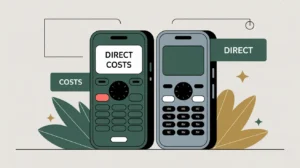Importance of the Donor Retention Rate
The donor retention rate measures the percentage of donors who give again in a subsequent year. It matters because retaining donors is far more cost-effective than acquiring new ones, and long-term supporters typically give more over time. Boards, fundraisers, and donors themselves look to this metric as an indicator of relationship strength and sustainability. For nonprofits in social innovation and international development, donor retention is especially critical, as building trust with funders often requires long-term engagement across projects and geographies. Strong retention rates reduce revenue volatility and create a reliable base for scaling programs.
Definition and Features
The donor retention rate is defined as:
Number of Repeat Donors divided by Number of Donors in the Prior Year.
Key features include:
- Loyalty Indicator: reflects how well the nonprofit sustains donor relationships over time.
- Benchmark Use: sector averages often fall between 40 60%; higher rates indicate stronger stewardship.
- Strategic Signal: declining retention may highlight issues in communication, donor recognition, or engagement.
- Link to Sustainability: strong retention lowers acquisition costs and supports predictable revenue.
How This Works in Practice
If a nonprofit had 1,000 donors last year and 450 gave again this year, its donor retention rate is 0.45 (45%). Leadership may analyze this further by segmenting donors across small, mid-level, and major tiers to target improvements. For example, if retention is strong among major donors but weak among grassroots supporters, the development team may focus on enhancing communication and stewardship at the small-donor level. Many boards monitor this annually alongside donor acquisition cost and lifetime value.
Implications for Social Innovation
For nonprofits in social innovation and international development, donor retention rate is a proxy for credibility and trust. High retention demonstrates that donors see value in continued support, which is critical for sustaining multi-year initiatives and cross-country operations. A low rate may indicate shallow engagement, reliance on transactional giving, or challenges in communicating impact. By improving stewardship and donor experience, nonprofits can increase retention, reduce fundraising costs, and build a more stable platform for innovation and systemic change.







